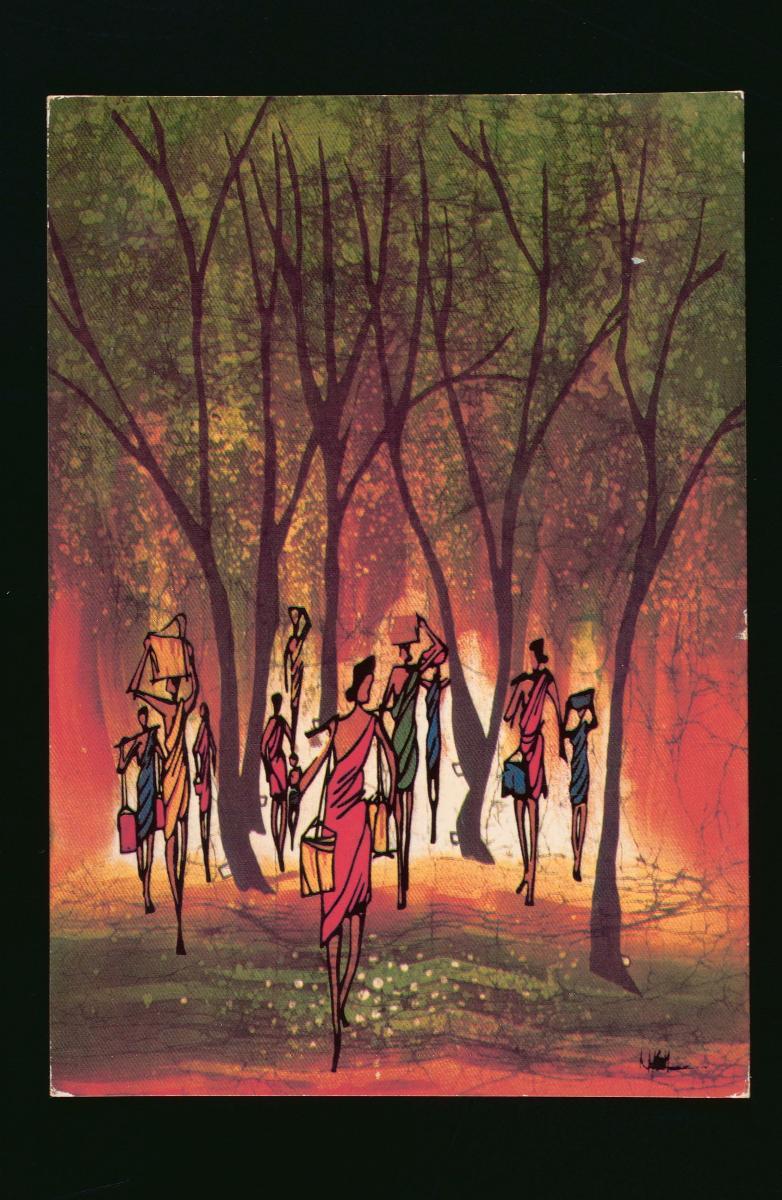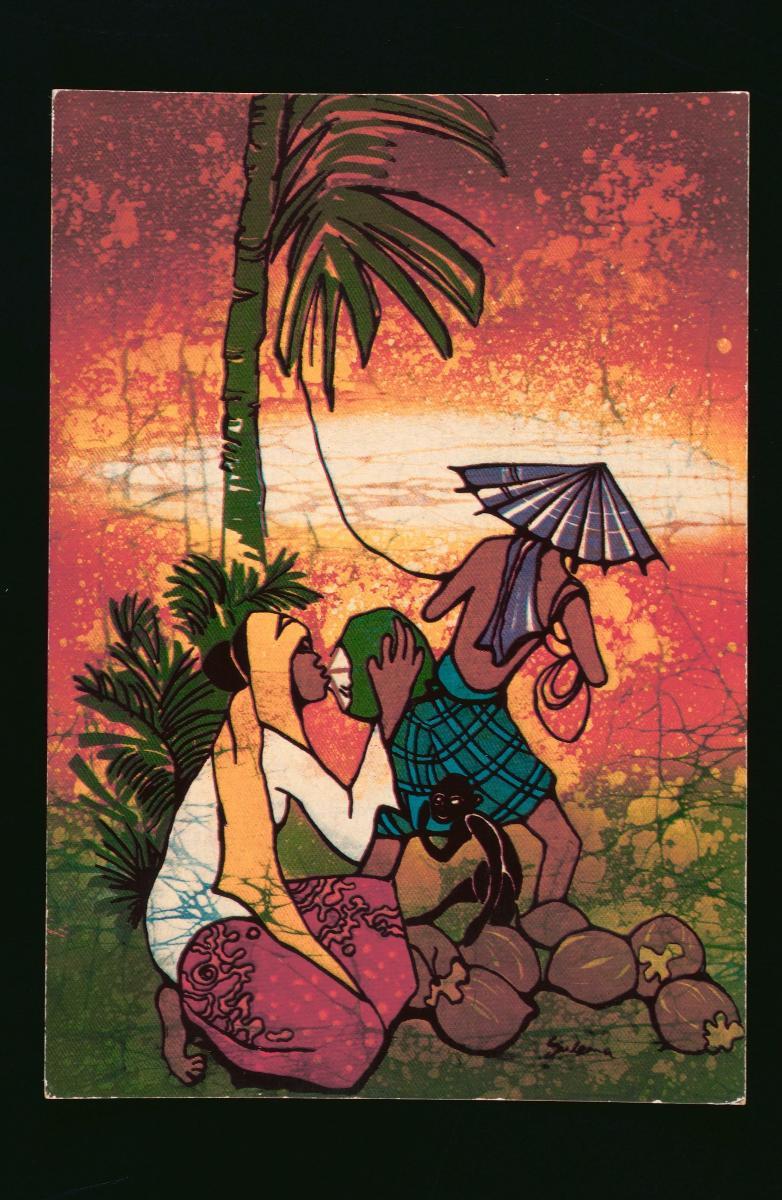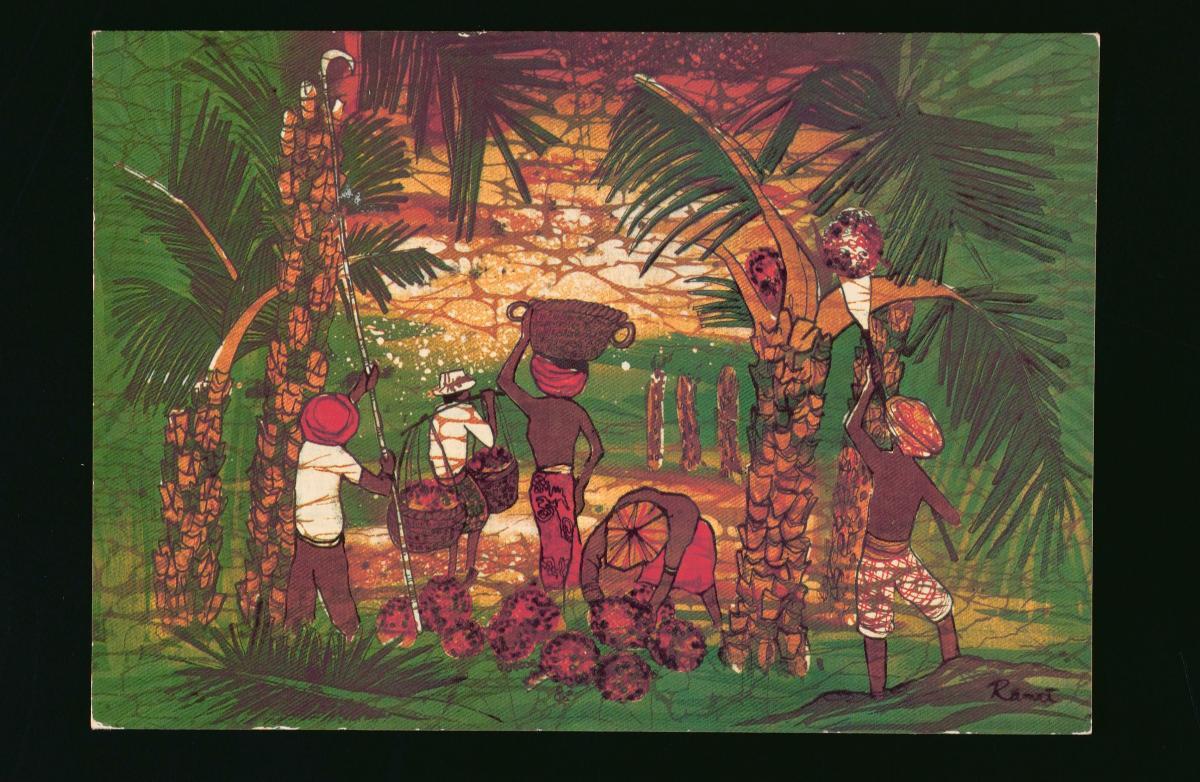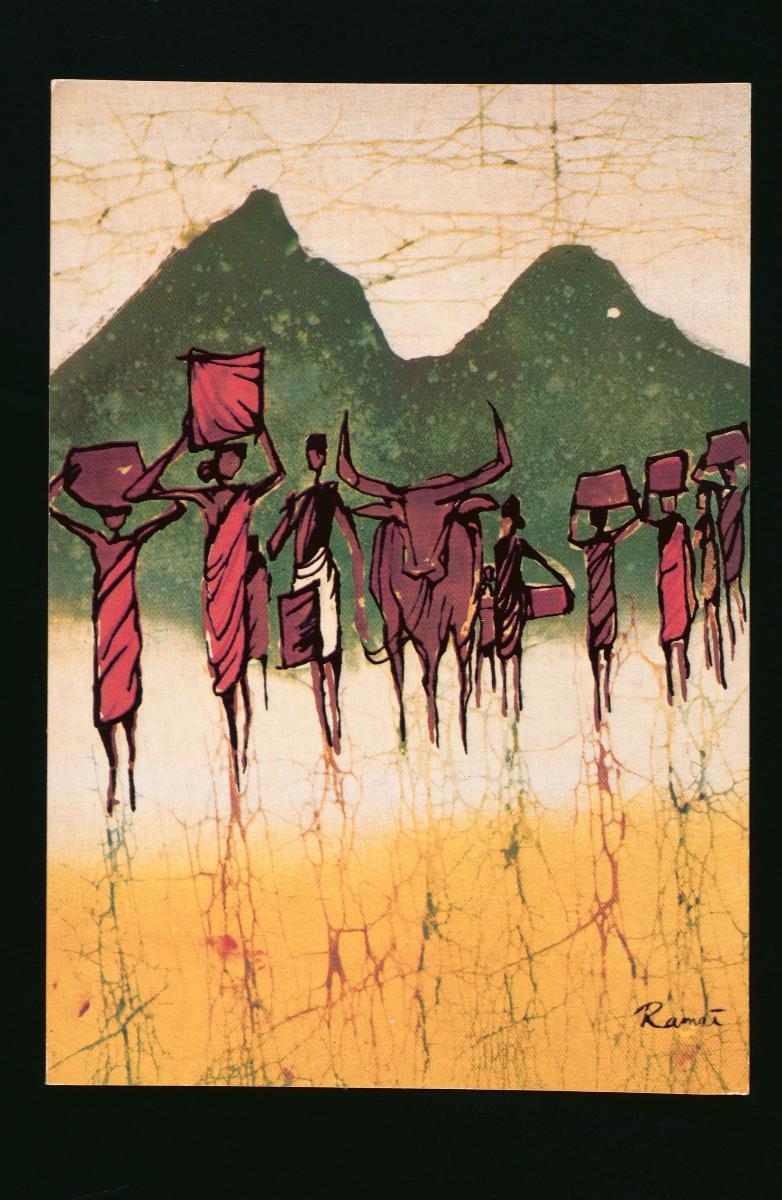The term ‘Batik’ can refer either to the wax-resist techniques of dyeing fabrics or to the fabrics that have been coloured using such techniques. The dyeing process involves the following basic steps: coating a plain piece of cotton cloth with melted wax according to a particular design pattern; dyeing the exposed parts of the coated cloth; and finally boiling the cloth to remove the wax. The process is then repeated several times using other waxing patterns and dyes to produce a colourful fabric with intricate designs. Batik has strong historical and cultural links to Indonesia, especially with Java where the production of the fabric was reported as early as the 16th century by European travellers to the island. During the 18th and 19th centuries, batik techniques and fabrics gained prominence throughout Southeast Asia. In Singapore, the technique was often used to decorate the sarong: a long skirt-like fabric popular with the Malays and Peranakans. Batik shirts are sometimes worn by men of all races as an alternative to Western-style shirts during formal occasions. Local artists such as Sarkasi Said, Jaafar Latiff, Tay Chee Toh, Seah Kim Joo, Chieu Shuey Fook, and Liu Kang have transformed Batik into a modern art form by experimenting with the technique in other mediums such as acrylic and oil paintings, as is the case with Liu Kang’s ‘Artist and Model’ (1954).















